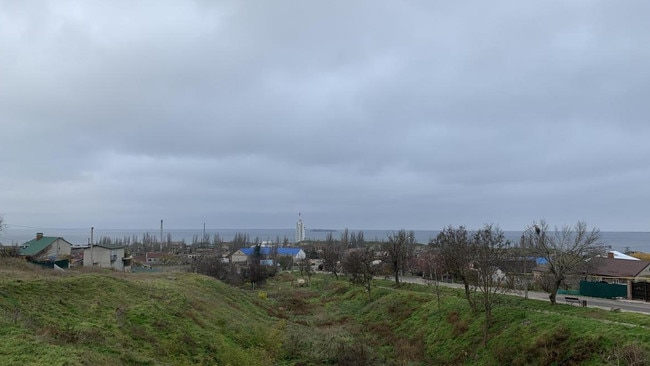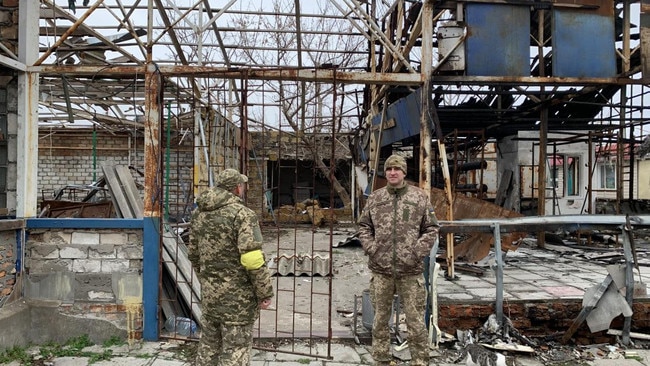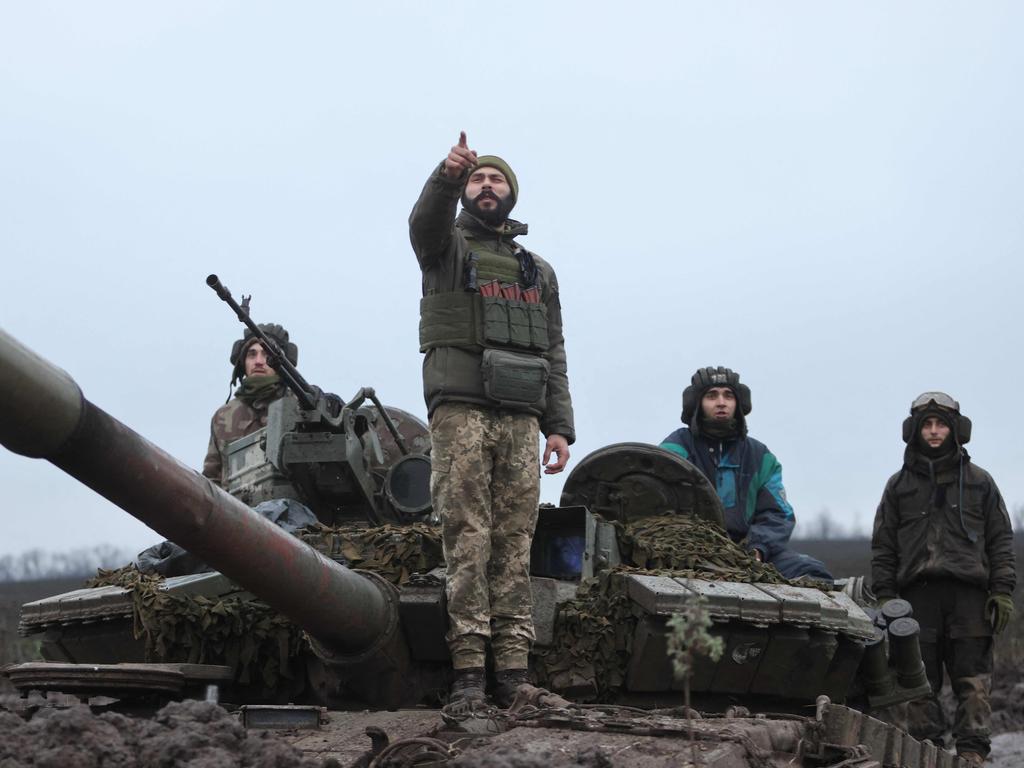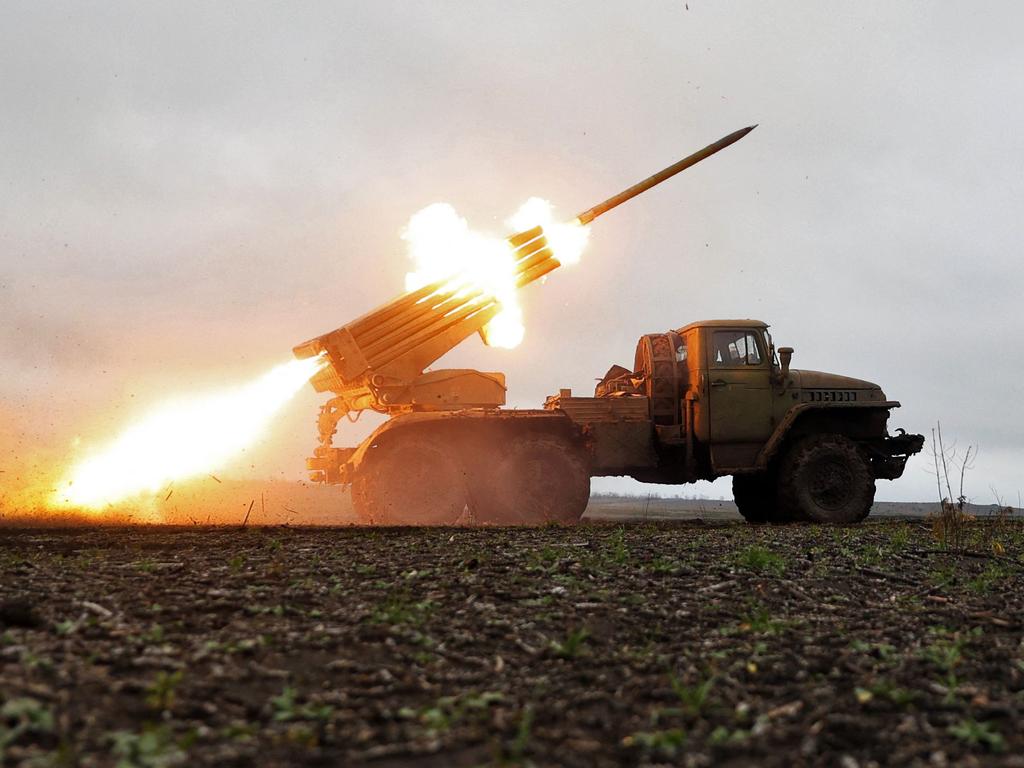Battle for tiny outcrop could decide who wins Ukraine war
Kyiv’s forces are carrying out a secret military operation against the occupying Russians on a Black Sea peninsula.

By day, the Kinburn Spit is little more than a dark, low bar across the grey water – it is night that reveals the fierce battle being fought over the peninsula of sand and marsh.
Red and orange fires light up the sky, and the explosions there shatter the peace of the town of Ochakiv on the far side of the water. “We see everything from up here,” says the mayor of Ochakiv, Serhiy Bychkov. “We don’t know exactly what’s going on, but you can see the fires on Kinburn.”
It is a glimpse of a secret military operation being carried out by the Ukrainian forces against the occupying Russians. The future of Ukraine’s war on the southern front may depend on its success or failure.
The battle is fogged by contradictory confirmation and an “operational silence” imposed by the Ukrainian military. Unconfirmed reports on Russian social media suggest that the Ukrainians have had a torrid time of it, having launched several unsuccessful assaults on the spit.

Puzzlingly, on maps published by the Ministry of Defence in London, Kinburn is marked as already being in Ukrainian hands. However, Yevhen Yerin, the Ukrainian military spokesman, said on Monday: “It’s too early to say that the armed forces of Ukraine have control over the Kinburn Spit.”
On Wednesday, The Times became the first media organisation allowed to visit Ochakiv since the Russian invasion. We found a town ravaged by daily artillery attacks from the spit. Despite the reluctance of commanders to comment directly on the battle, it is clear that they regard it as a high priority, but that they are far from achieving their goal – not only to quell the attacks into their territory, but also to open up a new line of counterattack on the southern front.
The 6.4km-long Kinburn Spit is a geographical oddity, one of those seemingly insignificant places whose position gives them enormous strategic importance in time of war. It is little more than a skinny bar of sand dunes extending west from the marshy Kinburn peninsula. Since the time of Catherine the Great and her wars with the Ottoman Empire, it has been fought over by rival armies seeking control over the crucial waterways around it.
Since seizing it from Ukraine in June, Russian forces on the spit have bombarded Ochakiv, 4km across the water. This narrow passage is the only route into the Black Sea from two rivers – the Buh and Dnipro. By holding Kinburn, Russia blocks off shipping from the port cities of Mykolaiv and Kherson. Mykolaiv shipped 35 per cent of Ukraine’s food exports last year. Its exports of grain, ores and other goods amounted to 30 million tonnes.
“The president [Volodymyr Zelensky] wants to open up Mykolaiv port to ship grain to Europe, and at the moment it’s not safe,” a senior military source in Ochakiv said. Independent analysts say the recapture of Kinburn would also give Ukraine another strategic prize, a new route to their dream – the expulsion of Russian forces from the rest of southern Ukraine, including the annexed Crimean peninsula.
Having retaken Kherson last month, Ukrainian forces find themselves blocked by the Dnipro, on whose eastern bank the Russians are digging in and fighting back with daily artillery attacks on the city. Control of Kinburn would give Ukraine a new foothold in occupied territory and a base from which to press another thrust in the direction of Crimea. According to analysis of satellite photographs of Russian forces by the Institute for the Study of War, an American think tank, Moscow has built defences at the neck of the Kinburn peninsula, suggesting that it has given up hope of holding on to the spit for much longer.

“The Russian military … clearly regards a Ukrainian counter-offensive across the Dnipro and/or via the Kinburn Spit as possible and very dangerous,” the institute wrote recently. “Russian forces are concerned that Ukrainian forces could establish themselves on or near the spit and use that base to launch a drive from the west. It has put considerable effort into a defensive array against such possible Ukrainian operations, but that array contains many vulnerabilities that the Ukrainians have shown that they can exploit.”
The first battle of Kinburn was fought in 1787, between Hussein Pasha of the Ottoman Empire and Alexander Suvorov, Catherine the Great’s general, whose statue still stands in Ochakiv. The strategic importance of the area was reaffirmed this year, when Britain promised a £1.25bn ($2.2bn) loan for, among other military bounty, naval ships and a new naval base in Ochakiv, built to NATO standards. In a speech in February, President Vladimir Putin cited the plan as evidence of NATO encroachment in Russia’s backyard. Days later Russian forces invaded Ukraine and the new base has not been built.
Russian occupation officials claimed that their forces repelled an attempted Ukrainian amphibious assault by five boats as early as mid-September.

In July the Russians claimed to have exposed a Ukrainian spy network in Kinburn. “The network’s members were in charge of receiving, accommodating and transporting Ukrainian sabotage groups,” Russian state media reported, and “hatched a series of terrorist attacks at the Russian defence ministry’s and civil infrastructure facilities”.
Ukraine has not commented on the claims, but it seems clear that they have good sources in Kinburn, and have detailed information about looting and damage caused to its three small villages by the invaders.
Russia blamed the Royal Navy for directing an attack by unmanned boat drones on its ships in the Crimean port of Sevastopol in October, a claim dismissed by Britain as “false claims of an epic scale”. Military officers in Ochakiv denied on Wednesday that British personnel were, or had been, in the town.
Whatever the outcome of the battle over the water, the effect of Russian artillery bombardment is very obvious. Fifteen people have died, and more than 20 have been injured in near-daily attacks, the latest of them on Wednesday morning. In a town with a pre-war population of 17,000, more than 50 buildings have been destroyed and 250 damaged, including a culture centre, sports centre and market.
“This used to be such a beautiful place – clean sea, clement weather, dolphins,” Helena, who sells vegetables at the market, said. “Tourists came to Kinburn from all over in the summer. I hear the explosions from there every night. Very loud, very frightening.”
– The Times






To join the conversation, please log in. Don't have an account? Register
Join the conversation, you are commenting as Logout